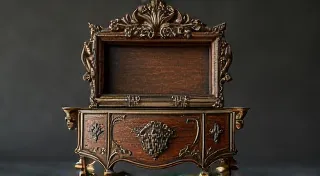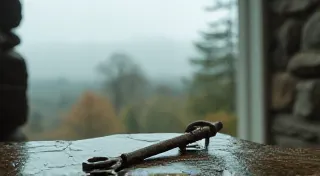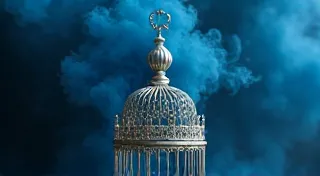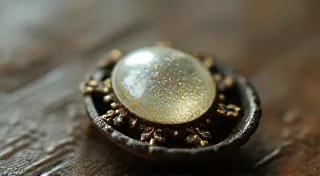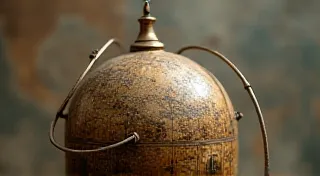The Silken Requiem: Hair Art as a Language of Grief
The Victorian era, a period often romanticized for its elegance and societal conventions, held a profound relationship with death. Mortality was a constant companion; outbreaks of disease were common, infant mortality rates were tragically high, and the average lifespan was significantly shorter than today. Unlike our often sanitized and detached approach to bereavement, Victorians openly acknowledged and memorialized their lost loved ones. And within this culture of mourning, a unique art form blossomed: hair art. It wasn’t simply about crafting objects from human hair; it was about translating grief, love, and remembrance into intricate, tangible expressions.
My own fascination with Victorian hair art began years ago, rummaging through an antique shop in rural England. I stumbled upon a small, unassuming oval framed piece – a mourning locket, intricately woven from strands of brown and grey hair, encircled by a border of black jet beads. It wasn’t the beauty of the object itself that captivated me, but the palpable sense of sadness and devotion radiating from it. It felt like holding a whispered secret, a tangible echo of a lost life and the love that lingered.
The Cultural Context of Victorian Mourning
To understand the significance of Victorian hair art, we must first consider the elaborate mourning rituals that permeated society. Elaborate mourning periods were strictly observed, dictating dress, jewelry, and social conduct. Black crepe, jet beads, and other dark materials were standard attire for those in mourning. Jewelry, particularly, served as a visible marker of grief. This is where hair art found its niche. It offered a deeply personal and permanent way to commemorate the deceased, more poignant than a simple black armband.
The practice of using hair in memorial objects wasn't new; it had roots in earlier centuries and was particularly prevalent in Europe. However, the Victorian era elevated it to a sophisticated art form. The availability of affordable hair jewelry-making materials, coupled with a societal emphasis on sentimentality and craftsmanship, fueled its popularity. It wasn’t uncommon for families to collect hair from deceased relatives and friends, preserving it in small boxes or albums, ready to be incorporated into these enduring tributes. The influence of the Romantic era, with its focus on emotion and the sublime, certainly played a role in shaping these practices, contributing to a broader cultural emphasis on expressing profound feelings through art. One can trace this connection further by exploring how the influence of Romanticism really shaped Victorian sentiment and artistic expression.
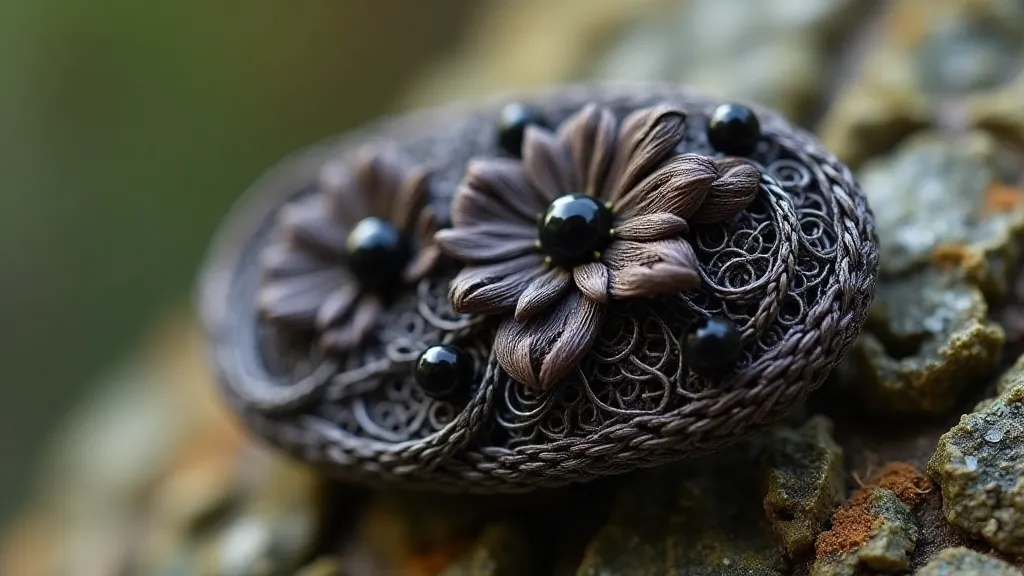
Decoding the Language of Hair: Symbolism and Meaning
Victorian hair art wasn’t just about arranging hair; it was a complex language, each element carrying a specific meaning. The color of the hair itself was significant. Dark hair often represented strength and resilience, while grey or white hair signified wisdom and a life well-lived. The arrangement of the hair was equally symbolic. Spirals frequently represented eternity and the cyclical nature of life and death. Rosettes symbolized remembrance and the enduring nature of love. Verses of poetry, often excerpts from Shakespeare or Tennyson, were woven into the hair designs, adding another layer of meaning.
Materials beyond hair played crucial roles. Jet, a deep black gemstone, was intrinsically linked to mourning, often used to frame hair pieces or incorporated into beaded borders. Black silk provided a contrasting backdrop, highlighting the hair’s texture and color. Seed pearls, small and unassuming, symbolized tears and the preciousness of life. Even the frame itself – whether made of gilded metal, ebony, or mother-of-pearl – contributed to the overall message of remembrance and loss.
The inclusion of names and dates was commonplace. A small, exquisitely scripted label would identify the deceased, making the piece a direct memorial. This personalization deepened the emotional impact, transforming a beautiful object into a cherished heirloom passed down through generations.
Craftsmanship and Techniques: A Delicate Art
Creating Victorian hair art required considerable skill and patience. The techniques employed were diverse, ranging from simple braiding and twisting to intricate weaving and roping. "Rosetting" involved meticulously curling and arranging individual strands to create a floral motif, a particularly challenging and time-consuming process. “Roping” created thick, three-dimensional strands of hair, often used to form borders or outlines. “Mosaic” techniques involved creating patterns using small pieces of hair, akin to creating a mosaic with tiles. The artistry involved extended beyond mere technical skill; it required a meditative practice, a deep connection to the purpose of the piece - preserving a memory and expressing grief.
Specialized tools were often used, including fine-toothed combs, scissors, and braiding needles. The process itself was a form of meditation, a tangible expression of grief and devotion. The dedication required to meticulously create these objects is truly remarkable. It’s easy to imagine the individual creating a piece, lost in the process, creating entire miniature worlds crafted with incredible detail and care, encapsulating their emotions within each strand.
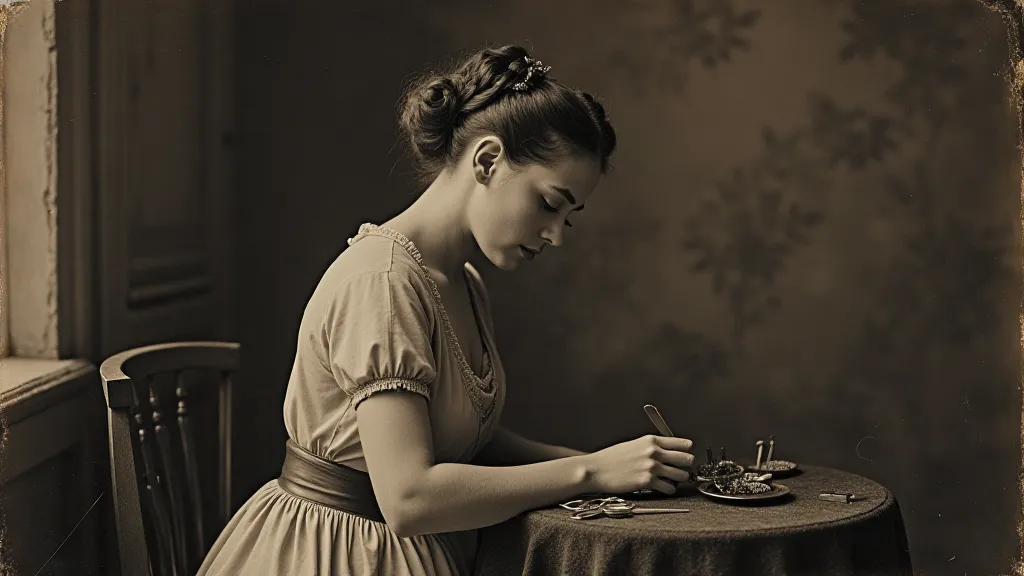
The Rituals of Creation and Preservation
Beyond the artistic skill involved, the creation of Victorian hair art was often entwined with specific rituals and ceremonies. The gathering of hair itself was a poignant event, often accompanied by prayers and remembrance. The crafting process was considered a sacred act, a way to connect with the deceased and process grief. The resulting artwork wasn's merely a decoration, it was a physical manifestation of love and remembrance, meant to be treasured and passed down through generations. The complexity and meaning invested in each piece elevated it to a deeply personal and symbolic treasure.
Collecting and Restoring: Preserving a Legacy
Today, Victorian hair art is a sought-after collectible. Original pieces, particularly those in excellent condition and with intricate designs, can command significant prices. However, it's important to approach collecting with a deep appreciation for the history and significance of these objects, not just their monetary value.
Restoring Victorian hair art is a delicate process, requiring specialized knowledge and skills. Simply cleaning a piece can cause irreparable damage. Loose hair strands need to be carefully reattached, and damaged silk needs to be repaired with archival-quality materials. The goal is to stabilize the piece, preserving its integrity without compromising its historical significance. The challenges of preservation go beyond the purely technical; it's about understanding the cultural context and respecting the original intent of the artist.
When acquiring a piece, it's crucial to examine it carefully, noting any signs of damage or deterioration. Researching the artist, if known, can add another layer of appreciation for the object's history and provenance. Ultimately, collecting Victorian hair art is about preserving a unique and poignant chapter in our cultural history, ensuring that these silent testimonies to grief and love continue to resonate with future generations. It is a practice steeped in tradition and requiring a thorough understanding of both the artistic techniques and the underlying cultural significance of these objects.
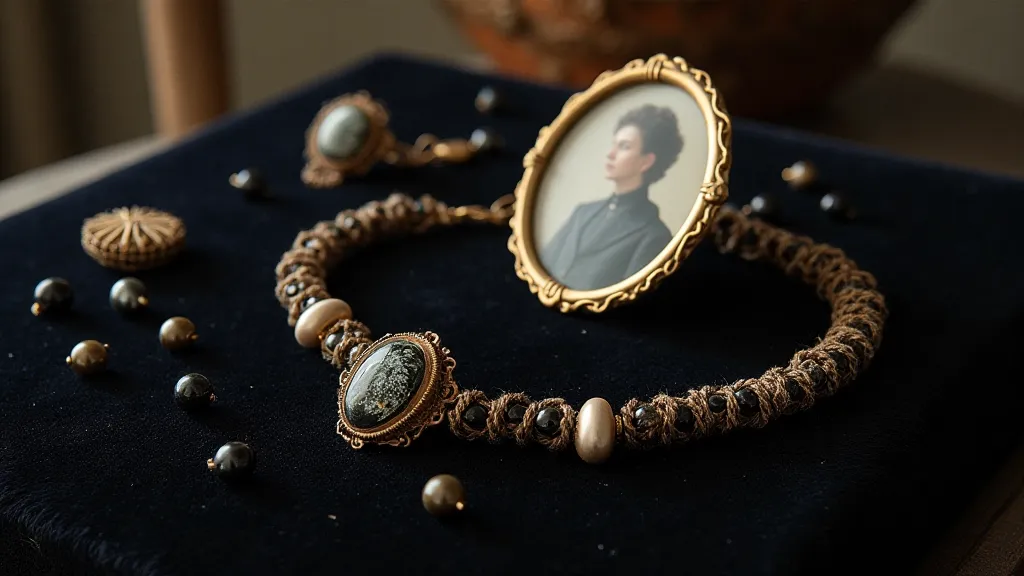
The world of Victorian hair art offers a profound window into a culture grappling with mortality and celebrating the enduring power of love. These intricate creations are more than just objects; they are poignant testaments to the human need to remember, to grieve, and to find solace in the face of loss – a language of grief, meticulously crafted, and beautifully preserved. The colors used also contributed greatly to the meaning and emotional impact of the art. Exploring the symbolism behind each shade can provide deeper insight into the artist's intentions and the cultural beliefs of the time.
